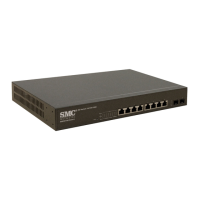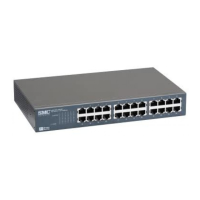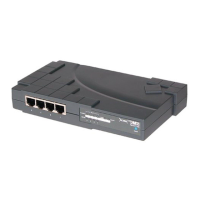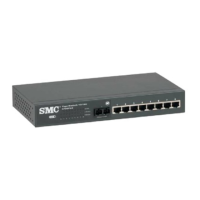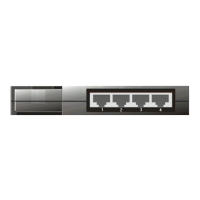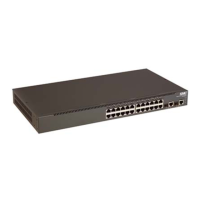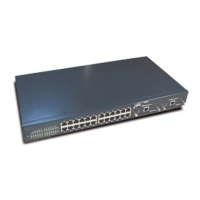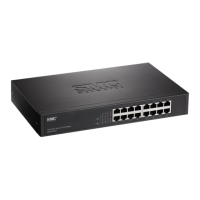C
HAPTER
4
| Configuring the Switch
Configuring the Spanning Tree Algorithm
– 126 –
changes, thereby combining remote network segments into a single
spanning tree. As implemented on this switch, BPDU transparency
allows a port which is not participating in the spanning tree (such as an
uplink port to the service provider’s network) to forward BPDU packets
to other ports instead of discarding these packets or attempting to
process them.
◆ Path Cost – This parameter is used by the STA to determine the best
path between devices. Therefore, lower values should be assigned to
ports attached to faster media, and higher values assigned to ports
with slower media. (Path cost takes precedence over port priority.)
By default, the system automatically detects the speed and duplex
mode used on each port, and configures the path cost according to the
values shown below.
◆ Priority – Defines the priority used for this port in the Spanning Tree
Algorithm. If the path cost for all ports on a switch are the same, the
port with the highest priority (i.e., lowest value) will be configured as
an active link in the Spanning Tree. This makes a port with higher
priority less likely to be blocked if the Spanning Tree Algorithm is
Table 9: Recommended STA Path Cost Range
Port Type IEEE 802.1D-1998 IEEE 802.1w-2001
Ethernet 50-600 200,000-20,000,000
Fast Ethernet 10-60 20,000-2,000,000
Gigabit Ethernet 3-10 2,000-200,000
Table 10: Recommended STA Path Costs
Port Type Link Type IEEE 802.1D-1998 IEEE 802.1w-2001
Ethernet Half Duplex
Full Duplex
Trunk
100
95
90
2,000,000
1,999,999
1,000,000
Fast Ethernet Half Duplex
Full Duplex
Trunk
19
18
15
200,000
100,000
50,000
Gigabit Ethernet Full Duplex
Trunk
4
3
10,000
5,000
Table 11: Default STA Path Costs
Port Type Link Type IEEE 802.1w-2001
Ethernet Half Duplex
Full Duplex
Tru nk
2,000,000
1,000,000
500,000
Fast Ethernet Half Duplex
Full Duplex
Tru nk
200,000
100,000
50,000
Gigabit Ethernet Full Duplex
Tru nk
10,000
5,000
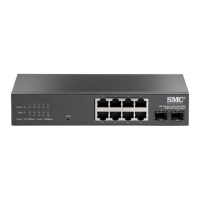
